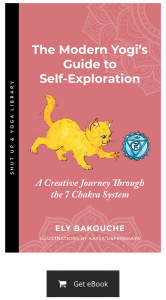There have been far too many times when my head has almost blown off after listening to a yoga teacher poetically sermonize on a bunch of bullshit. I say this as someone who loves teaching yoga, but every time this happens, the desperate theme song in my head sounds like this;
“Please learn to think for yourself. Repeating the lies that you’ve heard won’t help anyone else.”
Maybe this sounds dramatic to you. But consider that yoga teachers have a captive audience for a minimum of sixty minutes at a time. That audience breathes when the teacher says breathe, they raise their arms when the teacher tells them to, and they often (but not always) sacrifice their ability to think for themselves on the altar of the teacher.
Why does this happen?
Practicing yoga makes people feel good. So good, in fact, that they put the teacher on a pedestal and attribute the effects of the practice to the power of the teacher. Because of that, whatever the teacher says is held up as TRUTH, even when it’s wrong.
This is a big can of worms (obviously) and creates a dangerous culture of teacher worship in the yoga industry. But how do we, as yogis, change the pattern of teacher-student relationships from careless and casual to a dynamic of co-evolution that inspires change for the better?
My best bet for approaching this issue as an industry is to promote critical thinking amongst yoga teachers. This skill will only elevate the profession as a whole; when we commit to thinking critically, we’re also committing to truthfulness.
Let’s back up for a minute; back to the part where my head was exploding.
An Incomplete List of Questionable Yoga Teacher Sermons
Here is a list of some of the things I’ve heard yoga teachers say recently that are either not true, only partially true, or questionable because they’re being misrepresented:
– “The thyroid is massaged through vocalization, and this improves metabolism.”
– “You can stimulate your thyroid by practicing shoulderstand.”
Fact Check: The production of thyroid hormones starts in the pituitary (the brain), and it’s the1 binding of hormones from the pituitary which have travelled to the thyroid gland that stimulates production of T3 and T4. Dysfunction in the thyroid gland itself (either up or down regulation) is typically due to auto-immune conditions, surgery, or medications.2 In order to study the effects of asana on thyroid, one would need to take before and after blood samples, which hasn’t happened yet. I even saw shoulder stand and plow recommended for overactive and underactive thyroid in Healthline,3 claiming that inversions increase blood flow to the glands. In reality, the body keeps tight control on blood flow and inversions have not been found to increase blood pressure, in fact, due to pressure receptors in the blood vessels, the flow can decrease in inversions. In addition, the effect of mechanical stimulation (aka vocalization) on thyroid activity has been studied in rat cell cultures – not live rats – and the results were “promising”.4 Since that study, there’s been a flurry of activity claiming this as a truism.
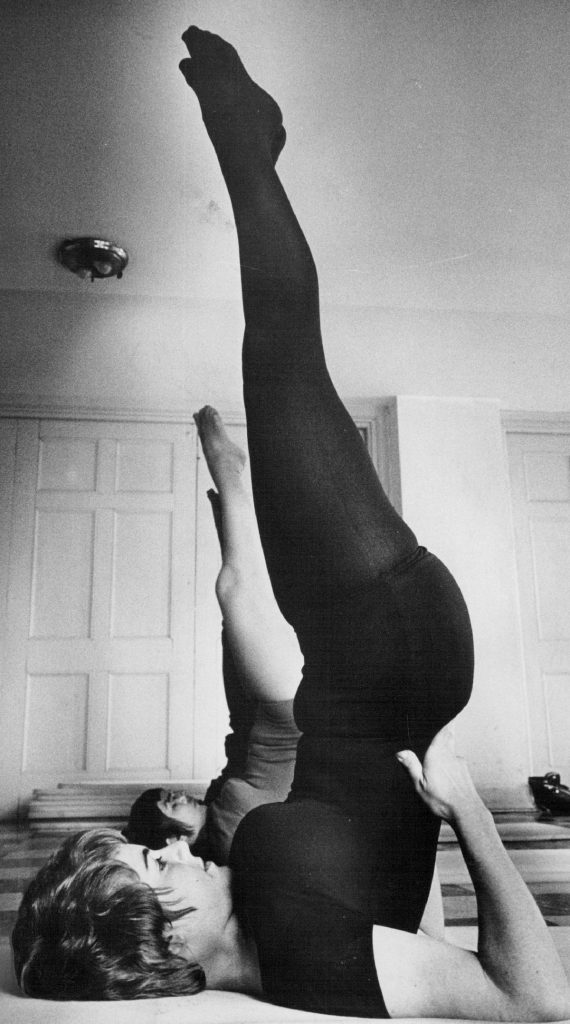
– “Practicing yoga increases your metabolism.”
Fact Check: This is so dependent on what one is actually doing in yoga, the pace, and an increase in muscle mass over time. Some studies show a decrease in basal metabolic rate, others a very modest increase.5 What’s more important to understand is what factors contribute to basal metabolic rate – for example, fat tissue has a lower basal metabolic rate than muscle tissue, so the more muscle, the more metabolism is increased. In fact, the biggest cause of change in metabolism is fat-free mass vs. fat mass, and next is age. 6
– “Practicing yoga increases the amount of oxygen to the brain,” or “practicing yoga increases oxygen intake,” or “ujjayi breathing increases oxygen intake.”
Fact Check: This is one that makes me cringe more than most. Slow deep breathing doesn’t appreciably change your oxygenation, which remains static for most people at about 98-99%. What it DOES do is make your breathing more efficient. If you’re breathing fast, you’re expending effort, and the air is contained mostly in the anatomical dead space (between the nose and the bronchi), so your body has to work harder for the same oxygenation. When you breathe more slowly, there is less calorie expenditure because you’re not just moving air in the anatomical dead space. 7
– “The deep breathing in yoga increases oxygen and decreases carbon dioxide.”
Fact Check: We need a certain amount of CO2, and your body keeps a very precise balance. When you blow off too much CO2, you’ll get anxious and panicked because the blood vessels in your brain constrict.
– “You must be seated in order to get the benefits of meditation.”
Fact Check: This is really more about tradition than anything else. Buddha meditated in a side-lying position, however, the story goes that he became enlightened in the lotus position, so that’s now the ridiculous standard that people are held to. Functional MRI studies require meditators to get into a meditative state lying down.8 Do I really need to go on with this one? If you’re falling asleep, you probably need more sleep.
– “Yoga is an amazing cardiovascular workout.”
Fact Check: Yoga is, at best, a moderate workout (unless you’re talking about the new craze for HIIT).
– “Twisting practices detoxify the body.”
– “Sweating in hot yoga detoxifies the body.”
– “Twisting rinses the organs” or “rinses the spine.”
Fact Check: Honestly… where does this stuff come from? Our organs are not like sponges. Detoxification happens through the liver and kidneys, and they do it well, and they do it constantly. If you want to help your organs detoxify your body, then decrease the load of shit that your organs have to process – drink less alcohol, do less drugs, eat food without chemicals.
– “You have to twist first to the right and then to the left, or you will back up your colon.”
Fact Check: Can you imagine if every time you twisted to the left to pick something up, you would become constipated? That’s basically what this statement is saying. Rotational movements happen all day long, and they’re important, but don’t make the mistake of saying this. With axial rotation, all of the ascending, transverse and descending colon are compressed in some way whether the twist is right or left. Exercise in general increases peristalsis (the muscle contractions that move food), so don’t be afraid of direction – just move your body.
– “Hot yoga increases weight loss.”
Fact Check: Hot yoga is beneficial in so many ways, however, studies have shown that there isn’t a huge change in adipose tissue from practicing hot yoga – changes in weight are likely due to water loss OR increase in muscle mass over time with a combination of mindful eating. 🙂
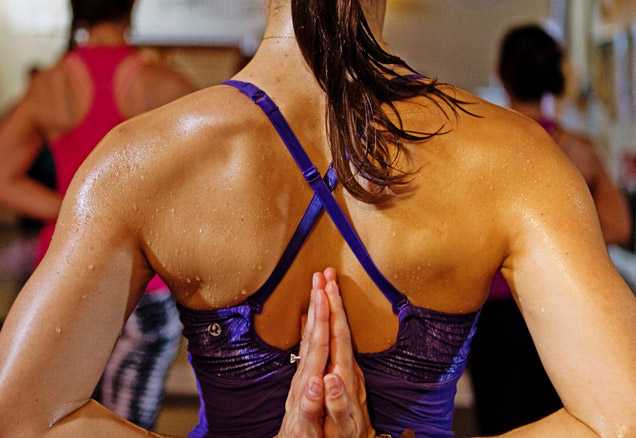
– “Hot yoga improves immune function.”
Fact Check: The internal body temperature does not change significantly when practicing hot yoga, therefore, the T-cell production that happens with a fever and engages the immune system doesn’t occur in hot yoga.
I was once even pulled aside by a colleague at a news event, where he begged me to stop telling people they were going to die one day. He claimed that if I connected with him on social media, I would see that there was a path to immortality, and he had found it.
Enough said.
Rather than going into the long process of unpacking each of these claims, because let’s face it, each of these claims would take an entire article of its own to properly debunk, I’ve decided to offer teachers a template for thinking for themselves. On the inside, it ensures that those who are already sold on yoga get the right information. On the outside, it ensures that those who are scientifically literate aren’t repulsed when they walk into a yoga class. It’s a win/win for everyone.
Understanding the Brain’s Relationship to Truth
Let’s start by looking at where we get tripped up when it comes to truth. I recently listened to a podcast interview with the brilliant Dr. Gleb Tsipursky Ph.D. The title of the podcast was “A Science-Based Guide to Truth Seeking.”
Tsipursky comments:
“The human mind is adapted to the savannah environment rather than to contemporary reality. The brain in the savannah environment is optimized for survival – not truth. In order to survive, one had to be a member of a tribe and anything that threatens the tribe or makes us feel uncomfortable moves us away from the truth. If our fight or flight response is stimulated, we get defensive and optimized for survival.9″
Tsipursky goes on to say that people will often choose a comfortable lie rather than an uncomfortable truth, largely because it maintains the tribal status quo, and it’s just plain easier.
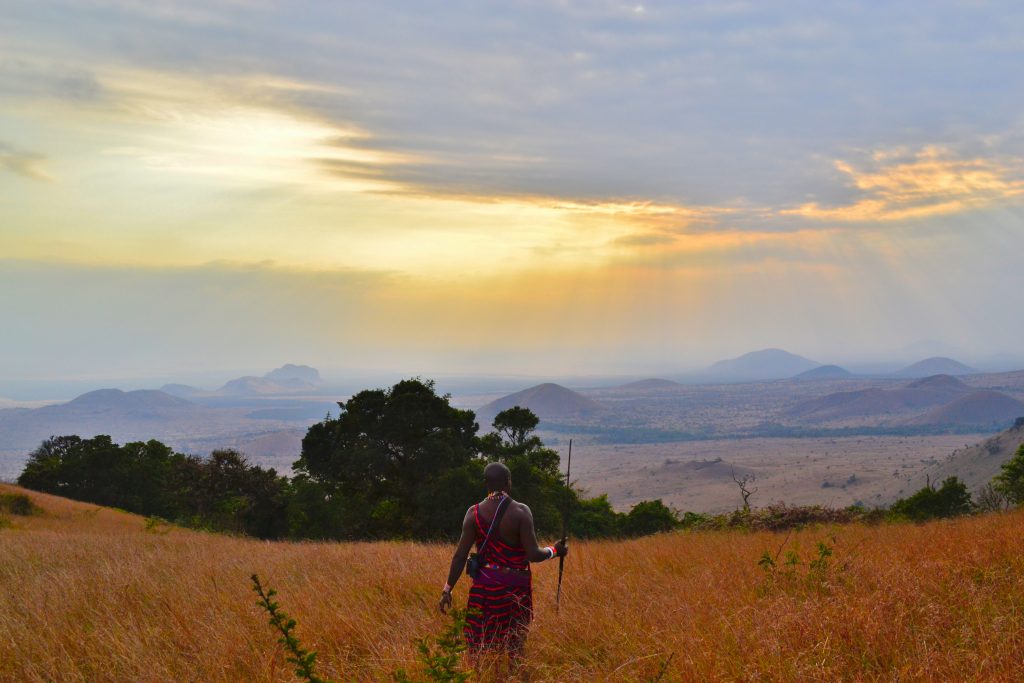
To make things more complicated, we walk around with certain cognitive biases. A cognitive bias is a way of thinking that affects your judgement and your decisions. Sometimes that cognitive bias is helpful, and sometimes it’s not. We all have cognitive biases; the brain is trying to simplify a large amount of data it’s interpreting, and in the simplification, mistakes can be made.
Here are some examples of common cognitive biases:
- Confirmation Bias: This happens when you look for evidence to support what you already believe and discount or ignore evidence that opposes what you believe. A great example is a crisis that the anti-vaccine movement has caused. Some parents are willing to ignore uncomfortable truths (without vaccines, people historically died in droves) in order to preserve their belief that vaccines are dangerous. Here’s a nice resource if you’re in that camp: historyofvaccines.org. 10
- Self-Serving Bias: This is where you blame circumstances outside of you when “bad” things happen and take credit when “good” things happen. For example, many parents blame outside events when something goes wrong in their kids’ lives, then take personal credit when things go well.
- Halo Effect: This occurs when you focus on one attribute of an individual and use that to affect your judgement of specific traits. For example, if you see someone who is physically attractive and then assume that they are also kind and intelligent.
- Projection Bias: When you overestimate how much other people agree with you. Most people think that other people are motivated in the same way or think in the same way as they do.
- Anchoring Bias: This is the tendency to rely on the first piece of information you’ve learned. For example, many yoga teachers learned specific alignment in their first teacher training, and yet we gradually see a shift from aesthetic alignment to functional movement. If teachers remain anchored in the first information they learned, it will be difficult to integrate emerging science.
So the next important question to ask yourself is, “How do I think for myself? How can I know what is true and what is not true?”
Training Yourself to Think Independently
Interestingly, Tsipursky comments that truth is tricky because it’s often subjective, which is why he created the pro-truth pledge, committing people to truthful behaviours that support facts. When you take this pledge you’re committing to the following:
Share truth
- Verify: fact-check information to confirm it is true before accepting and sharing it.
- Balance: share the whole truth, even if some aspects do not support my opinion.
- Cite: share my sources so that others can verify my information.
- Clarify: distinguish between my opinion and the facts.
Honor truth
- Acknowledge: acknowledge when others share true information, even when we disagree otherwise.
- Reevaluate: reevaluate if my information is challenged, retract it if I cannot verify it.
- Defend: defend others when they come under attack for sharing true information, even when we disagree otherwise.
- Align: align my opinions and my actions with true information.
Encourage truth
- Fix: ask people to retract information that reliable sources have disproved even if they are my allies.
- Educate: compassionately inform those around me to stop using unreliable sources even if these sources support my opinion.
- Defer: recognize the opinions of experts as more likely to be accurate when the facts are disputed.
- Celebrate: celebrate those who retract incorrect statements and update their beliefs toward the truth.
You can find (and sign) the Truth Pledge here: protruthpledge.org.
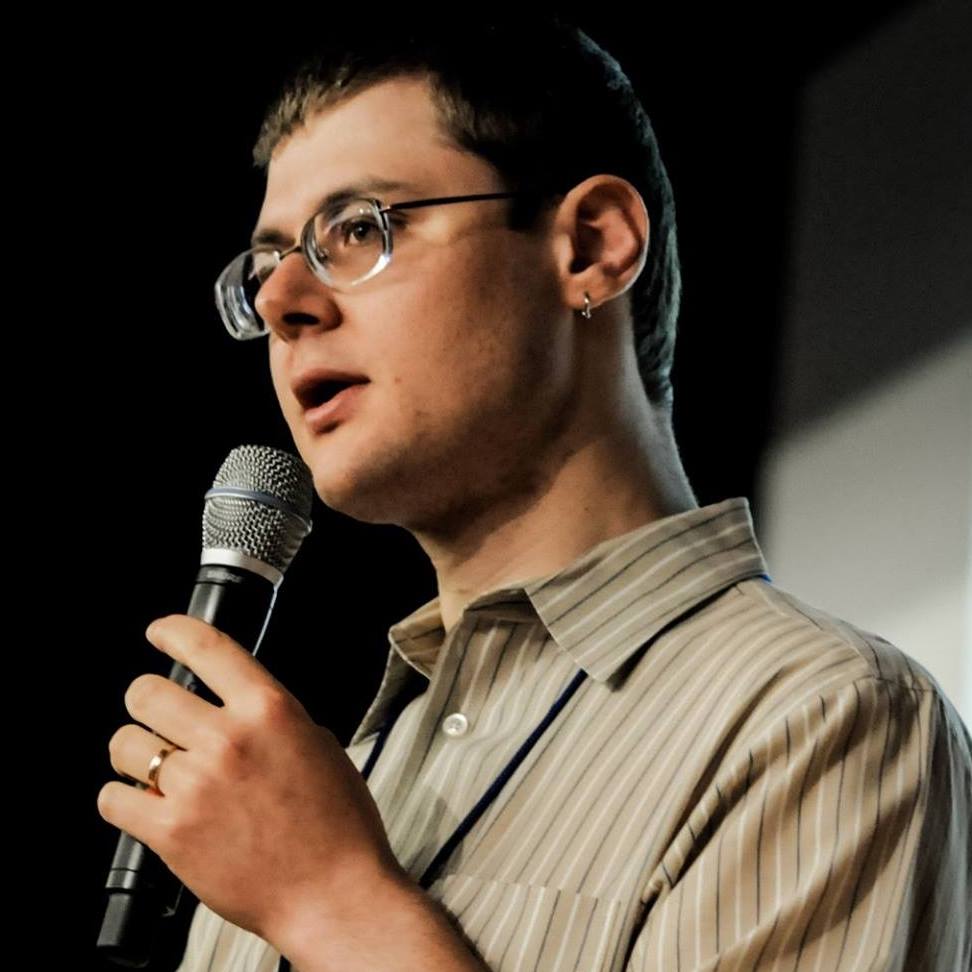
I love this pledge because it simplifies critical thinking while also holding people accountable to a higher standard. In fact, you could probably think critically just by following the rules above… but let’s unpack critical thinking a little more.
Improving your critical thinking skills is a lifelong process. It is a commitment to thinking more clearly and fairly and with more humility.
The Foundation for Critical Thinking defines the term as follows:
Critical thinking is that mode of thinking — about any subject, content, or problem — in which the thinker improves the quality of his or her thinking by skillfully analyzing, assessing, and reconstructing it. Critical thinking is self-directed, self-disciplined, self-monitored, and self-corrective thinking. It presupposes assent to rigorous standards of excellence and mindful command of their use. It entails effective communication and problem-solving abilities, as well as a commitment to overcome our native egocentrism and sociocentrism11
We’re all subject to flawed thinking. Our thinking flaws might stem from prejudice, silent social contracts that we’ve unconsciously bought into, cognitive bias, social norms, or taboos that have been internalized, or excessive self-interest.
Critical thinking asks you to ask questions in the face of flawed thinking… lots of questions.
I remember that during my first yoga teacher training, we were told to treat the teacher as an enlightened master. Our feet couldn’t point at the teacher, and there was so much reverence that questions seemed to imply insolence. Questions are essential and belong in any student-teacher interaction, as long as they’re relevant to the subject at hand and lead to learning for everyone.
So when someone says something, make sure you’re aware of:
- The source of information (expert opinion, scientific study, tradition, experience, etc.);
- How you would test the information to see if it was true;
- Who’s saying it? The integrity, trustworthiness, and character of the person sharing the information;
- If there is evidence, what is the quality of the evidence?
Understanding What Evidence Looks Like
The re-telling of a personal story is not strong evidence – something isn’t automatically true just because someone says it is! Verification involves researching both supporting and opposing views of whatever subject you’re exploring. I’ve outlined different types of evidence below. As you read through, keep in mind that research on yoga is widely criticised due to small sample sizes.
Weak Evidence: Anecdotal Reports or Expert Opinion
A group discussion about our experiences represents an anecdotal report. This kind of evidence is considered weak and unreliable (we all remember the same situations differently). On the other hand, anecdotal reports are helpful catalysts – they make us pay attention. Even the opinion of an expert in their field is considered weak evidence. So if “Jane Doe,” yoga teacher for 20 years, made a definitive statement about x in yoga based on her experience, it’s still WEAK evidence.
Moderate Evidence: Case Reports or Case Studies
Case reports or studies are observational in nature, and they establish correlation, NOT causation. In these observational situations, a researcher might track individuals and note specific changes in relation to practices, or the researcher might go back in time and look at a population with one outcome versus a population with a different outcome. This is moderate, because when you establish correlation, you’re only observing that two things have occurred at the same time – it doesn’t mean that one caused the other. For example, if the rates of autism increased equally with the rise in consumption of organic foods (which they do), this is CORRELATION, it doesn’t mean that one caused the other. It merely shows you that two things are happening at the same time.
Moderate to Strong Evidence: Randomized Control Trials
These are experimental situations where two sample populations participate in a trial that has a test group and a control group. The results of the evidence are stronger if the study is “double-blind” (i.e., neither the researchers nor the participants are aware of which group they’re in).
Strongest Evidence: Systematic Reviews
A systematic review will examine the methodology and results of several randomized control trials and report on the results of all the studies together. This is often effective at eliminating problems with sample size or bias. This is considered the gold standard because the data sets are large, and they’ve been reproduced multiple times.
A Note about Sample Size:
The sample size is critical. There are so many lifestyle factors (sleep, diet, drug/alcohol intake, environmental exposure) and genetic factors (susceptibility to cancer, obesity, diabetes, heart disease, and mental illness) that impact physiology. Because of this, assumptions about causation are dicey. Say you have a population of 10 000 yoga practitioners and you want evidence of something with a low margin of error (say 2.5%), then you need a sample of at least 1332 people.12 Contrast that with the fact that yoga studies are often quoted with sample sizes of 10 or 12 people. That’s not nearly enough people to make generalized claims about the whole population.
What is an Expert and When Should We Trust Them?
Even though expert opinion is considered weak evidence, you need to understand what an expert looks like so that you can begin to gather information. An expert is the first step. I’ve observed two things that are problematic in the yoga industry. First, there is the “jack of all trades” problem. I’ve seen yoga teacher trainings offered by one or two people who are presenting themselves as experts in all of the subjects they’re covering.
This is a problem because it’s very difficult for one person to be masterful across many domains. It’s the very reason why there are “specialists” in the medical field. Specialization is where we can become outstanding.

The second problem is that these same yoga teachers are defining themselves as experts based on who they’ve studied with. As if taking a course with a particular person makes you an expert. As someone who has taught teacher training for over a decade, I know firsthand that some people will work really hard and integrate a huge amount of curriculum. Others will struggle to finish the same course. Are they equally qualified simply because they both studied with me? Of course not.
The definition of an expert is complex. Malcolm Gladwell defines an expert as someone who has spent 10 years or 10,000 hours working in a particular area. However, researchers have found only a 29.9% variance in those who practice something deliberately over time – meaning that more time will make you better, but not a lot better.13
In the Neuroscience of Expertise, Dr. Merim Bilalic comments that an expert is formed when deliberate practice is coupled with focus on singular aspects of a subject or sport. And the expertise is further developed with constant feedback, exploration, and testing.
The gist of this is that you need to get wise about who your expert teachers are and what makes them experts. Someone isn’t an expert teacher just because they are good at performing yoga postures. Similarly, they aren’t experts just because they’ve studied with a particular person. These things can help, but they aren’t reliable indicators of someone who should lead you.
Practicing the Yoga of Critical Thinking
Start by having a little faith in yourself. You don’t need to be a scientist to think critically; you just need to be human. Consider this your first experiment on challenging the way that you think, so that your thinking becomes more refined.
Step 1: Always ask questions. Why? How do you know? Where did you get your information? What convinced you of this? What evidence have you seen? Can you show me where you learned that?
Step 2: Challenge your beliefs. Where did that thought come from? Is there evidence for the story I’m creating about x, y, z? How do I know the things I know?
Step 3: Get informed. Do your research. Use this article to help you sort through the evidence.
Step 4: Be Brave. Be Accountable. Your integrity as a teacher is everything; call yourself out when you get new information, and this will help truth to grow.
Repeat.
The word “integrity” can be defined as having a sound moral character, or to be in a whole, undiminished state. As you build your critical thinking capacity, your professional reputation will grow, but you’ll also become more confident in every other part of your life. Personal integrity contributes to better boundaries in relationships, with a clear understanding of who to partner with and why. The ability to discern truth from “fake news” is just as relevant in the world of yoga as it is for global and national politics. And learning to think for yourself lends itself to greater happiness, self-esteem, and social action. [14]
Endnotes
- https://www.yourhormones.info/hormones/thyroid-stimulating-hormone/
- https://www.mayoclinic.org/diseases-conditions/hypothyroidism/symptoms-causes/syc-20350284
- https://www.healthline.com/health/yoga-for-thyroid#yoga-poses
- Wagner, A., Chinnathambi, S., Titze, I., & Sander, E. (2016). Vibratory stimulation enhances thyroid epithelial cell function. Biochemistry and Biophysics Reports,8, 376-381. doi:10.1016/j.bbrep.2016.10.008
- Chaya, M., Kurpad, A., Nagendra, H., & Nagarathna, R. (2006). The effect of long term combined yoga practice on the basal metabolic rate of healthy adults. BMC Complementary and Alternative Medicine,6(1). doi:10.1186/1472-6882-6-28
- Johnstone, A. M., Murison, S. D., Duncan, J. S., Rance, K. A., & Speakman, J. R. (2005). Factors influencing variation in basal metabolic rate include fat-free mass, fat mass, age, and circulating thyroxine but not sex, circulating leptin, or triiodothyronine. The American Journal of Clinical Nutrition,82(5), 941-948. doi:10.1093/ajcn/82.5.941
- Dr. Kamyar Soghrati, MD, FRCP, August 8th, 2019
- Boccia, M., Piccardi, L., & Guariglia, P. (2015). The Meditative Mind: A Comprehensive Meta-Analysis of MRI Studies. BioMed Research International,2015, 1-11. doi:10.1155/2015/419808
- The Psychology Podcast, Episode 172
- Niccolai, L. M., & Pettigrew, M. M. (2016). The Role of Cognitive Bias in Suboptimal HPV Vaccine Uptake. Pediatrics, 138(4). doi:10.1542/peds.2016-1537
- http://www.criticalthinking.org/pages/our-conception-of-critical-thinking/411
- https://www.research-advisors.com/tools/SampleSize.htm
- Hambrick, D. Z., Oswald, F. L., Altmann, E. M., Meinz, E. J., Gobet, F., & Campitelli, G. (2014). Deliberate practice: Is that all it takes to become an expert? Intelligence, 45, 34–45
- Grossmann, I., & Brienza, J. P. (2018). The strengths of wisdom provide unique contribution to improved leadership, sustainability, inequality, Gross National Happiness, and civic discourse in the face of contemporary world problems. doi: 10.31234/osf.io/bju4x
Edited by Sarah Dittmore


